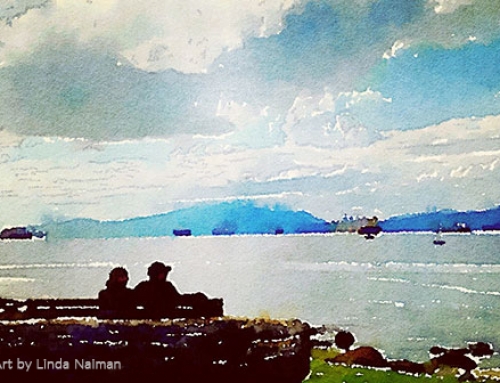Creative resilience is your most important resource during times of crisis, change & transition.

Cycles of Creation and Managing Transitions
Transition is the psychological process people must go through to come to terms with new situations.
Change is situational: the new boss, new teams, new roles. It’s the psychological aspect that’s difficult to manage, and it is only after a psychological transition that people adapt to change. According to William Bridges, author of Managing Transitions, “It isn’t the changes that do you in, it’s the transitions.”
We live in a world of constant change. Nature is an example of constant birth, growth, death, and renewal. Understanding the cycles of creation will help us thrive in change, rather than fear it. While transitions can be painful, they are a source of creativity, growth and transformation.
I don’t believe we can experience a transformation without undergoing a psychological transition, and if we can cultivate resilience, we can proceed with a sense of adventure on what Joseph Campbell described as a Hero’s Journey (illustrated at the top of the page). We are all on a hero’s journey through life, and if we want to find the boon, or the gift that lies buried in the abyss, we must be willing to embrace great difficulties that are a prerequisite to transformation.
I believe creative resilience is key to helping you thrive during times of transition. To be creatively resilient is to reimagine our circumstances, and shift our perspective to discover new possibilities.
“Inside the word “emergency” is “emerge”; from an emergency, new things come forth. The old certainties are crumbling fast, but danger and possibility are sisters.”
—Rebecca Solnit, author, Hope in the Dark
The pandemic gives us a tremendous opportunity to pause, reflect, rethink our beliefs and values, and to proactively and collectively shape the future we want. I believe the path forward is through the heart.
“We can create a world that works for everyone or face a future that no longer works for anyone.”
— David Korten
What does this mean? For me, it means not getting sucked into the turmoil and disruption of fear, chaos and crisis, but taking a deep dive below surface agitation. Physicist David Bohm put it this way, “At some point deep within the implicate order, thought and language fail us and only sacred silence can reveal the truth. That silence is the language of the whole, the universe expressing itself through us in a life of integrity rather than fragmentation.”
These strategies will help you thrive during times of transition
1. Develop a sense of optimism
“Resilient people and companies face reality with staunchness, make meaning of hardship instead of crying out in despair, and improvise solutions from thin air. Others do not.”
— Diane Coutu
This is not only a time of tremendous chaos, ambiguity, uncertainty, and confusion, it’s also fertile ground for creativity. There are no paths to the future, so we must create them. We have an opportunity. to build a better future for people and the planet.
Martin Seligman, a pioneer in the positive psychology field, says, “Optimistic people tend to interpret troubles as transient, controllable and specific….in other words, … surmountable, temporary. Pessimists believe troubles last forever, undermine everything they do and are uncontrollable… troubles are pervasive, permanent and personal.”
The optimist’s outlook on failure can thus be summarized as “What happened was an unlucky situation (not personal), and really just a setback (not permanent) for this one, of many, goals (not pervasive)” Optimism is both a natural trait and a learned skill.
Resilient people face difficult situations realistically, yet find ways to be optimistic. Studies indicate optimists live longer, have better relationships, and achieve more success in life. Optimists are not magical thinkers, unable to see the dark side; rather, they accept reality, and put things in perspective.
Sign up for my online course on Kadenze.com and learn at your own pace:
Creative Resilience: How To Flourish In The Face Of Life’s Challenges
2. Practice mindfulness
“To think in terms of either pessimism or optimism oversimplifies the truth. The problem is to see reality as it is.”
– Thich Nhat Hanh
By training your mind to focus only on the present, you can learn to let go of regrets from the past or worries about the future, and accept things as they are. Mindfulness teaches you to be in control of your mind so that your mind doesn’t control you. Those who learn to be mindful experience less stress and clearer thinking.
Mindfulness is not about “zoning out;” but a time to purposefully pay attention to your emotions, thoughts, and how your body feels, without judging your experience of the present moment. “The present moment is the only time over which we have dominion,” says Thich Nhat Hanh, “Live the actual moment. Only this actual moment is life.”
Mindfulness and meditation will help calm down the fight/flight/freeze mechanism of your brain, and create a space for higher order thinking and generating creative solutions. Herbert Benson, a pioneer of scientific research on meditation, extolls its benefits on the human body — reduced blood pressure, heart rate, and brain activity.
3. Find meaning and purpose even in terrible times
“In some ways suffering ceases to be suffering at the moment it finds a meaning.”
— Viktor Frankl
Viktor Frankl’s 1946 book Man’s Search for Meaning offers profound lessons on being resilient in dire situations. Frankl says meaning and purpose is found in every moment of living; life never ceases to have meaning, even in suffering and death. “We who lived in concentration camps can remember the men who walked through the huts comforting others, giving away their last piece of bread. They may have been few in number, but they offer sufficient proof that everything can be taken from a man but one thing: the last of the human freedoms—to choose one’s attitude in any given set of circumstances, to choose one’s own way.”
This is a point I make with clients who feel powerless: No matter what is going on, you can always choose your attitude, and show leadership, by setting an example for others.
4. Express yourself creatively
“To be successful, we must live from our imaginations, not from our memories.”
—Steven Covey
Bohm invites us to imagine a better future with this question, “Suppose we were able to share meanings freely without a compulsive urge to impose our view or conform to those of others and without distortion and self-deception. Would this not constitute a real revolution in culture?” Yes it would.
When my coaching clients tell me about times of transition, I ask what they could do to nurture themselves to reduce stress. Creativity is always at the top of the list, along with getting enough sleep, exercise, proper nutrition and being with friends or family.
Creative expression has the power to heal emotions, and nurture the soul. When we enter the flow states of complete absorption in a creative process, we open our awareness to new perceptions, and new perspectives. Creativity is something you can control. When you take time out of time to create, you shift your field of attention into something generative and life affirming.
I myself am guilty of neglecting my personal creativity, although I seem to be writing all the time. I felt a trace of sadness about not having painted for so long, when I read James McMullen’s poetic discourse on how to draw, in the New York Times.
He writes, “Drawing is a process of engagement for the artist, a period of both time and struggle that pulls the artist deeply and intensely into his subject and his ideas.” In my view, this is key to becoming resilient. His series of articles Line by Line, is about “rediscovering the lost skill and singular pleasure of drawing. I also see this as a metaphor for everyone.
Is there a lost skill, a singular pleasure you need to reclaim?
Take a deeper dive into Creative Resilience
Consider booking a Creative Resilience workshop for your team
5. Improvise
Resilient people are masters of innovation and resourcefulness. They have the capacity to improvise and to create bricolage: creative problem-solving using a variety of materials that happen to be available.
The Apollo 13 mission (launched April 13, 1970) is a dramatic example of improvisation: When the spacecraft was well on its way to the Moon, an oxygen tank exploded, scrubbing the lunar landing and putting the crew in jeopardy.
Working with Mission Control in Houston, the crew used their lunar module as a “lifeboat.” Using spare parts and spacecraft canisters, the astronauts improvised a method to reduce the carbon dioxide concentration in the spacecraft. The mission ended safely on April 17, 1970,
How might you improvise at home or at work? What resources do you have available to you, to utilize in new ways?
6. Connection
“When we focus on ourselves, our world contracts as our problems and preoccupations loom large. But when we focus on others, our world expands. Our own problems drift to the periphery of the mind and so seem smaller, and we increase our capacity for connection – or compassionate action.”
—Daniel Goleman
Healthy relationships are at heart of creativity and collaboration. Appreciating others, engaging in purposeful conversations and the ability to resolve conflicts are essential ingredients for collaboration. Communication is about making a connection, and a connection won’t happen unless we tap into our abilities to listen, to empathise, to really be present with others, and to talk about what matters. Find ways for people to get to know each other not just as professionals, but also as human beings, to build trust and provide occasions for informal social interaction.
7. Gratitude
“Be thankful for what you have; you’ll end up having more. If you concentrate on what you don’t have, you will never, ever have enough.”
—Oprah Winfrey
According to the Greater Good Science Center at UC Berkeley “The experience of gratitude encourages us to appreciate what is good in our lives and compels us to pay this goodness forward. People with more grateful dispositions report being happier and more satisfied with their lives. Gratitude also functions as social glue that nurtures the formation of new friendships, enriches our existing relationships, and underlies the very foundation of human society.”
There is also a surprising connection between gratitude and creativity.
8. Creating a path to the future
“Small groups exploring common questions and learning that others are doing the same, has always been the locus for large scale transformative change.”
—Juanita Brown
It helps to connect with groups who want to make a positive change in the world, whose values you share, and who are willing to embrace diverse perspectives to meaningful insights.
One way to do this is to create a community of practice so that you can experiment and learn as a group. Communities of practice (CoPs) as defined by Etienne and Beverly Wenger-Trayner, are “groups of people who share a concern, a set of problems, or a passion about a topic, and who deepen their knowledge and expertise in this area by interacting on an ongoing basis.”The great thing about CoPs is that you can free yourself from the tyranny of perfectionism and allow yourself to explore and experiment.




